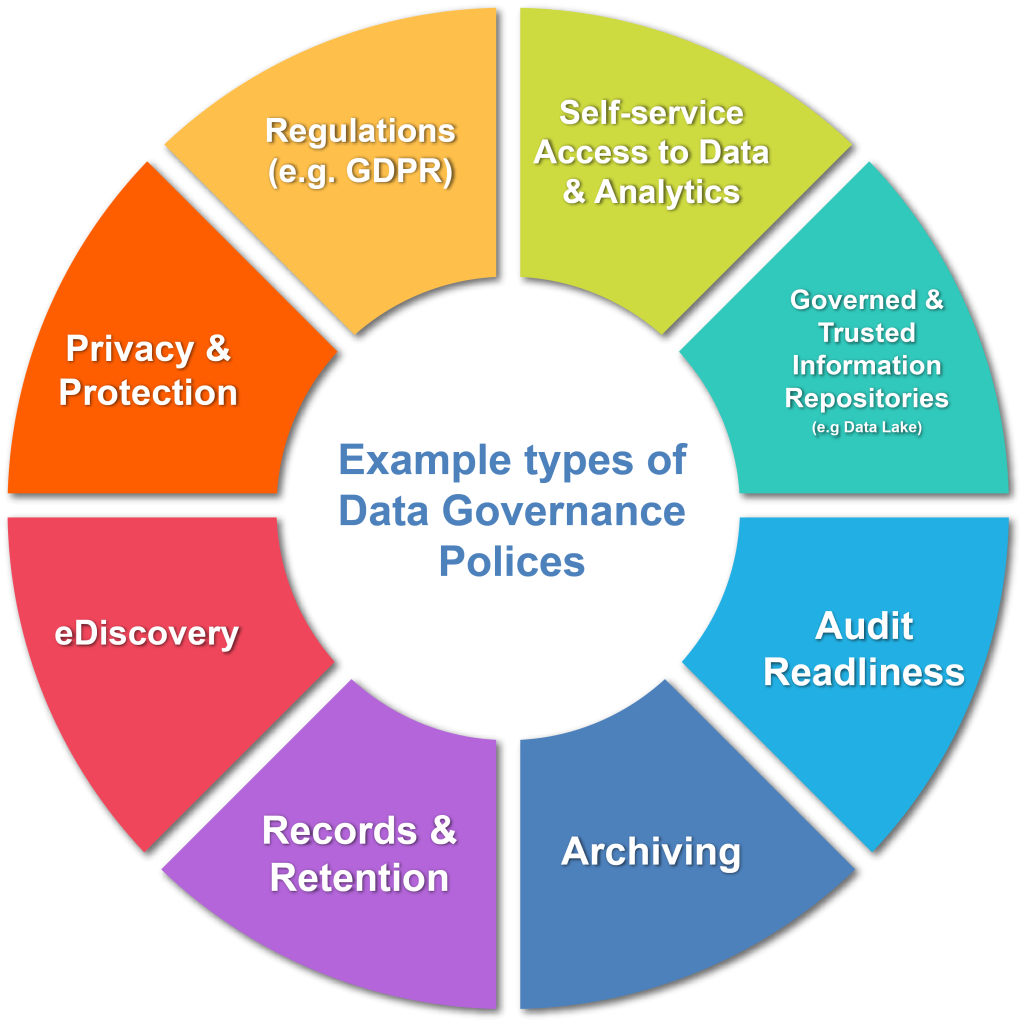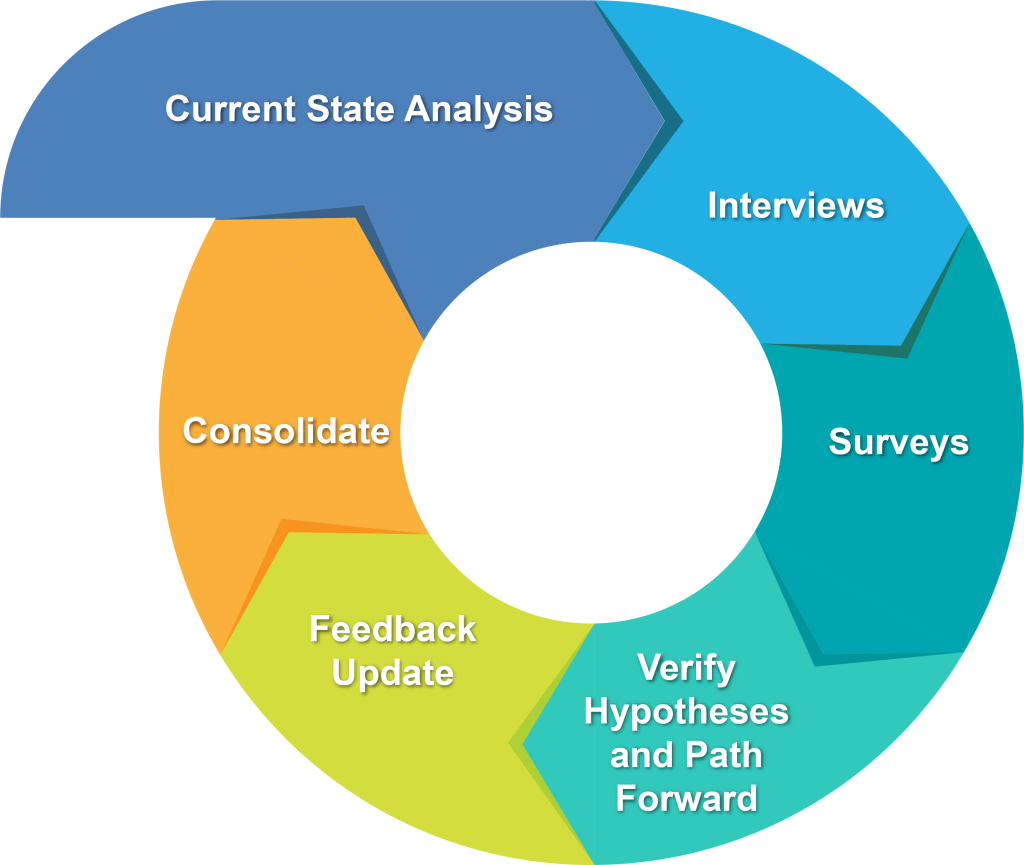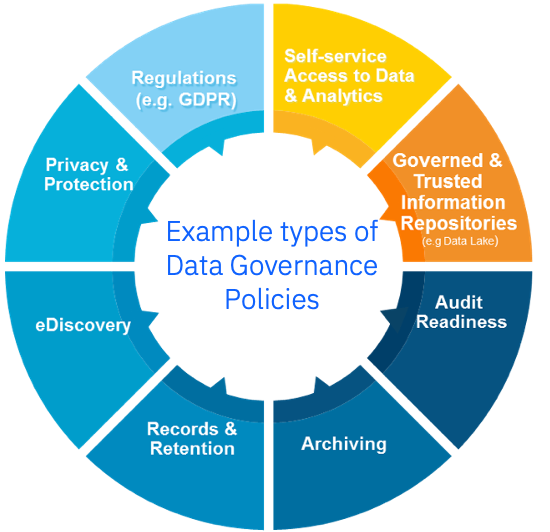A step-by-step guide to setting up a data governance program
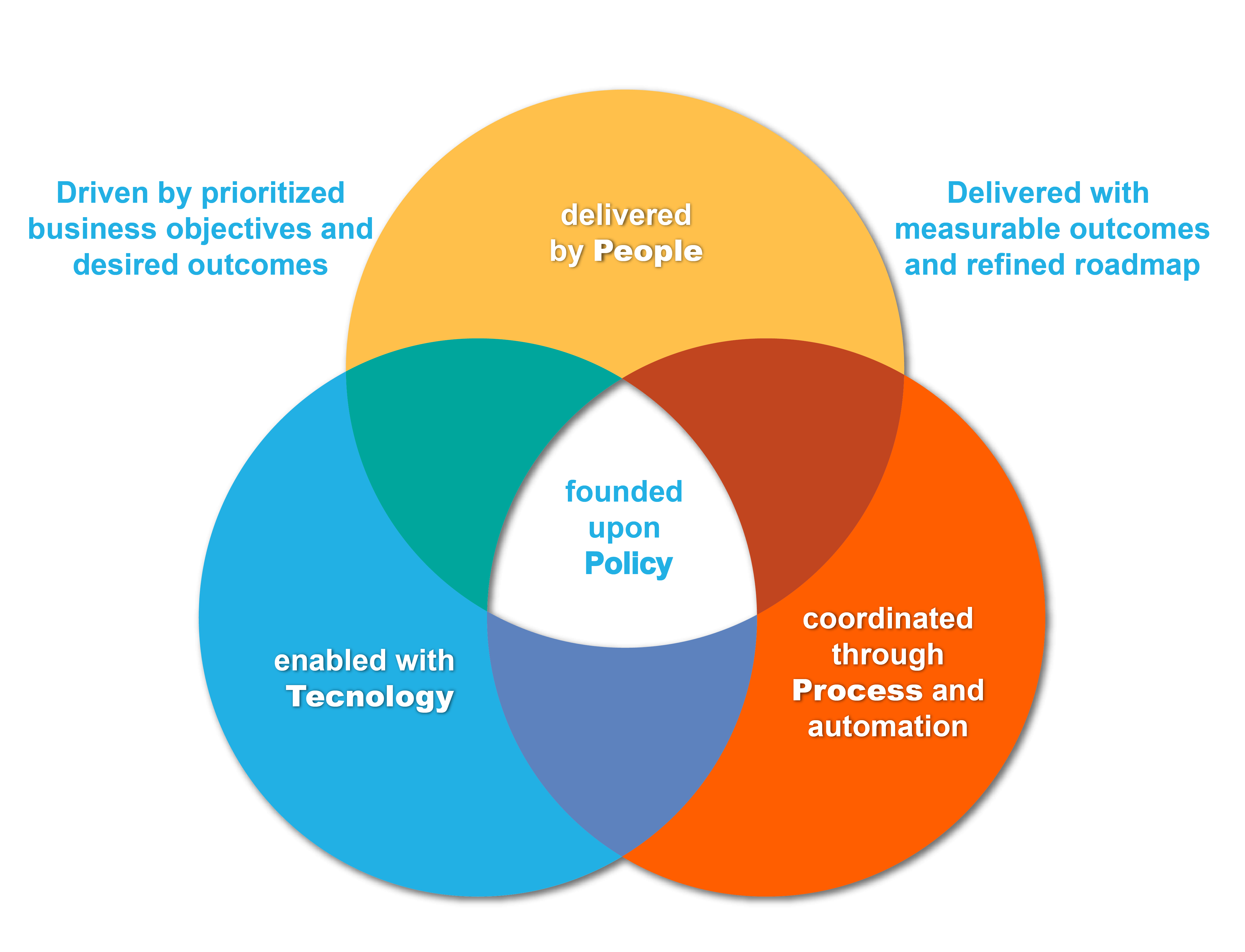
In our last blog, we delved into the seven most prevalent data challenges that can be addressed with effective data governance. Today we will share our approach to developing a data governance program to drive data transformation and fuel a data-driven culture.
Data governance is a crucial aspect of managing an organization’s data assets. The primary goal of any data governance program is to deliver against prioritized business objectives and unlock the value of your data across your organization.
Realize that a data governance program cannot exist on its own – it must solve business problems and deliver outcomes. Start by identifying business objectives, desired outcomes, key stakeholders, and the data needed to deliver these objectives. Technology and data architecture play a crucial role in enabling data governance and achieving these objectives.
Don’t try to do everything at once! Focus and prioritize what you’re delivering to the business, determine what you need, deliver and measure results, refine, expand, and deliver against the next priority objectives. A well-executed data governance program ensures that data is accurate, complete, consistent, and accessible to those who need it, while protecting data from unauthorized access or misuse. Consider the following four key building blocks of data governance:
Consider the following four key building blocks of data governance:
- People refers to the organizational structure, roles, and responsibilities of those involved in data governance, including those who own, collect, store, manage, and use data.
- Policies provide the guidelines for using, protecting, and managing data, ensuring consistency and compliance.
- Process refers to the procedures for communication, collaboration and managing data, including data collection, storage, protection, and usage.
- Technology refers to the tools and systems used to support data governance, such as data management platforms and security solutions.
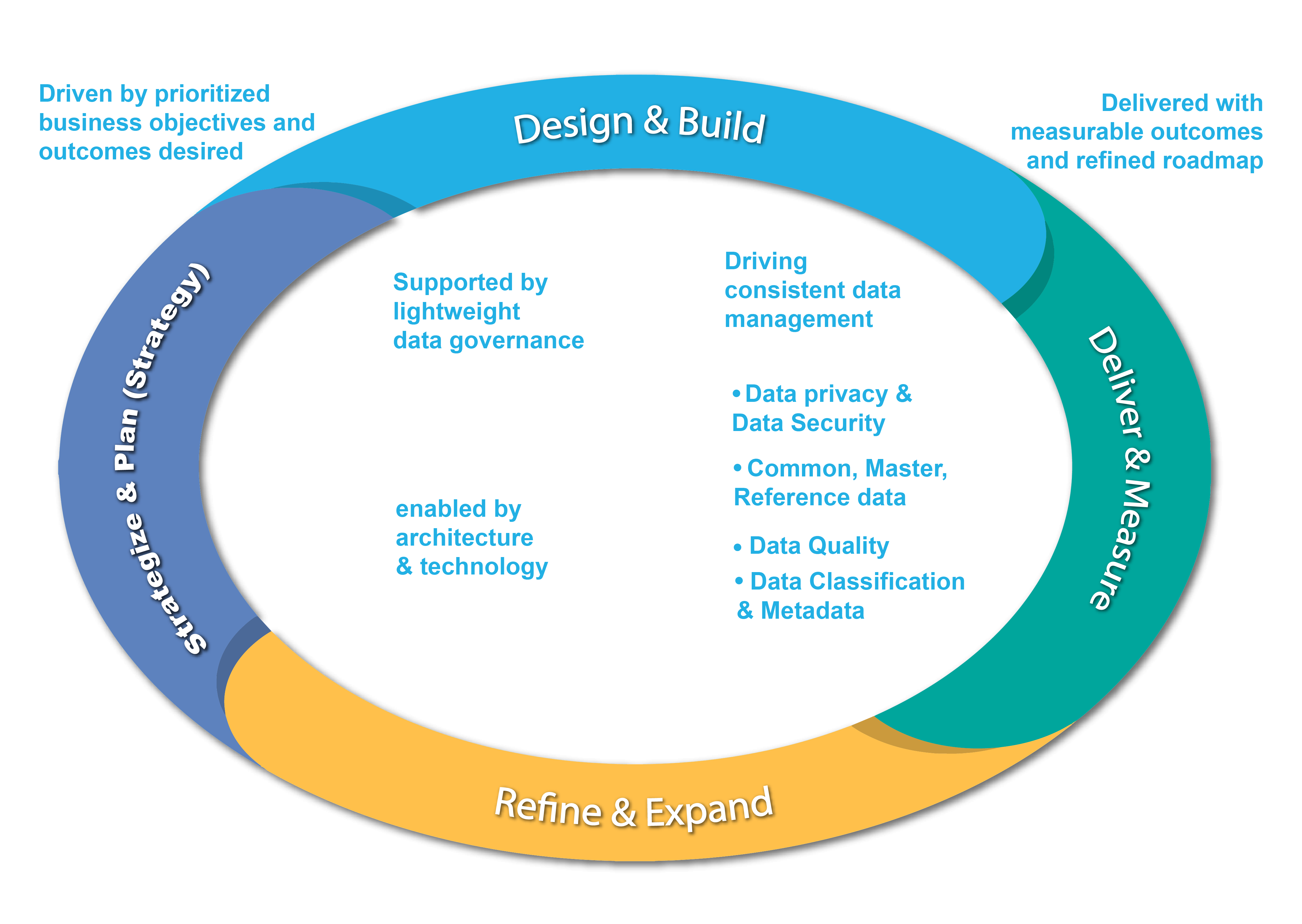
For example, if the goal is to improve customer retention, the data governance program should focus on where customer data is produced and consumed across the organization, ensuring that the organization’s customer data is accurate, complete, protected, and accessible to those who need it to make decisions that will improve customer retention.
It’s important to coordinate and standardize policies, roles, and data management processes to align them with the business objectives. This will ensure that data is being used effectively and that all stakeholders are working towards the same goal.
Starting a data governance program may seem like a daunting task, but by starting small and focusing on delivering prioritized business outcomes, data governance can become a natural extension of your day-to-day business.
Building a data governance program is an iterative and incremental process
Step 1: Define your data strategy and data governance goals and objectives
What are the business objectives and desired results for your organization? You should consider both long-term strategic goals and short-term tactical goals and remember that goals may be influenced by external factors such as regulations and compliance.
A data strategy identifies, prioritizes, and aligns business objectives across your organization and its various lines of business. Across multiple business objectives, a data strategy will identify data needs, measures and KPIs, stakeholders, and required data management processes, technology priorities and capabilities.
It is important to regularly review and update your data strategy as your business and priorities change. If you don’t have a data strategy, you should build one – it doesn’t a long time, but you do need the right stakeholders to contribute.
Once you have a clear understanding of business objectives and data needs, set data governance goals and priorities. For example, an effective data governance program may:
- Improve data quality, which can lead to more accurate and reliable decision making
- Increase data security to protect sensitive information
- Enable compliance and reporting against industry regulations
- Improve overall trust and reliability of your data assets
- Make data more accessible and usable, which can improve efficiency and productivity.
Clearly defining your goals and objectives will guide the prioritization and development of your data governance program, ultimately driving revenue, cost savings, and customer satisfaction.
Step 2: Secure executive support and essential stakeholders
Identify key stakeholders and roles for the data governance program and who will need to be involved in its execution. This should include employees, managers, IT staff, data architects, and line of business owners, and data custodians within and outside your organization.
An executive sponsor is crucial – an individual who understands the significance and objectives of data governance, recognizes the business value that data governance enables, and who supports the investment required to achieve these outcomes.
With key sponsorship in place, assemble the team to understand the compelling narrative, define what needs to be accomplished, how to raise awareness, and how to build the funding model that will be used to support the implementation of the data governance program.
The following is an example of typical stakeholder levels that may participate in a data governance program:
By effectively engaging key stakeholders, identifying and delivering clear business value, the implementation of a data governance program can become a strategic advantage for your organization.
Step 3: Assess, build & refine your data governance program
With your business objectives understood and your data governance sponsors and stakeholders in place, it’s important to map these objectives against your existing People, Processes and Technology capabilities to achieve these objectives.
Data management frameworks such as the EDM Council’s DCAM and CDMC offer a structured way to assess your data maturity against industry benchmarks with a common language and set of data best practices.
Look at how data is currently being governed and managed within your organization. What are the strengths and weaknesses of your current approach? What is needed to deliver key business objectives?
Remember, you don’t have to (nor should you) do everything at once. Identify areas for improvement, in context of business objectives, to prioritize your efforts and focus on the most important areas to deliver results to the business in a meaningful way. An effective and efficient data governance program will support your organization’s growth and competitive advantage.
Step 4: Document your organization’s data policies
Data policies are a set of documented guidelines for how an organization’s data assets are consistently governed, managed, protected and used. Data policies are driven by your organization’s data strategy, align against business objectives and desired outcomes, and may be influenced by internal and external regulatory factors. Data policies may include topics such as data collection, storage, and usage, data quality and security:
Data policies ensure that your data is being used in a way that supports the overall goals of your organization and complies with relevant laws and regulations. This can lead to improved data quality, better decision making, and increased trust in the organization’s data assets, ultimately leading to a more successful and sustainable organization.
Step 5: Establish roles and responsibilities
Define clear roles and responsibilities of those involved in data governance, including those responsible for collecting, storing, and using data. This will help ensure that everyone understands their role and can effectively contribute to the data governance effort.
The structure of data governance can vary depending on the organization. In a large enterprise, data governance may have a dedicated team overseeing it (as in the table above), while in a small business, data governance may be part of existing roles and responsibilities. A hybrid approach may also be suitable for some organizations. It is crucial to consider company culture and to develop a data governance framework that promotes data-driven practices. The key to success is to start small, learn and adapt, while focusing on delivering and measuring business outcomes.
Having a clear understanding of the roles and responsibilities of data governance participants can ensure that they have the necessary skills and knowledge to perform their duties.
Step 6: Develop and refine data processes
Data governance processes ensure effective decision making and enable consistent data management practices by coordinating teams across (and outside of) your organization. Additionally, data governance processes can also ensure compliance with regulatory standards and protect sensitive data.
Data processes provide formal channels for direction, escalation, and resolution. Data governance processes should be lightweight to achieve your business goals without adding unnecessary burden or hindering innovation.
Processes may be automated through tools, workflow, and technology.
It is important to establish these processes early to prevent issues or confusion that may arise later in the data management implementation.
Step 7 – Implement, evaluate, and adapt your strategy
Once you have defined the components of your data governance program, it’s time to put them in action. This could include implementing new technologies or processes or making changes to existing ones. It is important to remember that data governance programs can only be successful if they demonstrate value to the business, so you need to measure and report on the delivery of the prioritized business outcomes. Regularly monitoring and reviewing your strategy will ensure that it is meeting your goals and business objectives.
It is important to remember that data governance programs can only be successful if they demonstrate value to the business, so you need to measure and report on the delivery of the prioritized business outcomes. Regularly monitoring and reviewing your strategy will ensure that it is meeting your goals and business objectives.
Continuously evaluate your goals and objectives and adjust as needed. This will allow your data governance program to evolve and adapt to the changing needs of the organization and the industry. An approach of continuous improvement will enable your data governance program to stay relevant and deliver maximum value to the organization.
Get started on your data governance program
In conclusion, by following an incremental structured approach and engaging key stakeholders, you can build a data governance program that aligns with the unique needs of your organization and supports the delivery of accelerated business outcomes.
Implementing a data governance program can present unique challenges such as limited resources, resistance to change and a lack of understanding of the value of data governance. These challenges can be overcome by effectively communicating the value and benefits of the program to all stakeholders, providing training and support to those responsible for implementation, and involving key decision-makers in the planning process.
By implementing a data governance program that delivers key business outcomes, you can ensure the success of your program and drive measurable business value from your organization’s data assets while effectively manage your data, improving data quality, and maintaining the integrity of data throughout its lifecycle.
So where are you in your data governance journey? Reach out to IBM Expert Labs – we’d be happy to help.
In case you missed them, check out our earlier blogs, Understanding Data Governance and Unlocking the power of data governance by understanding key challenges.
The post A step-by-step guide to setting up a data governance program appeared first on Journey to AI Blog.

